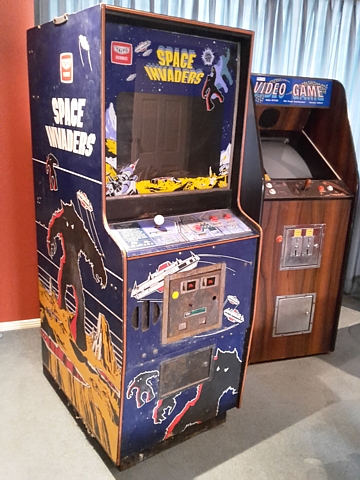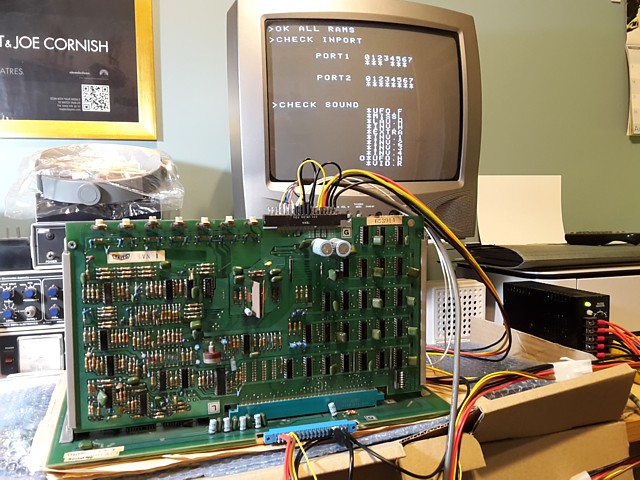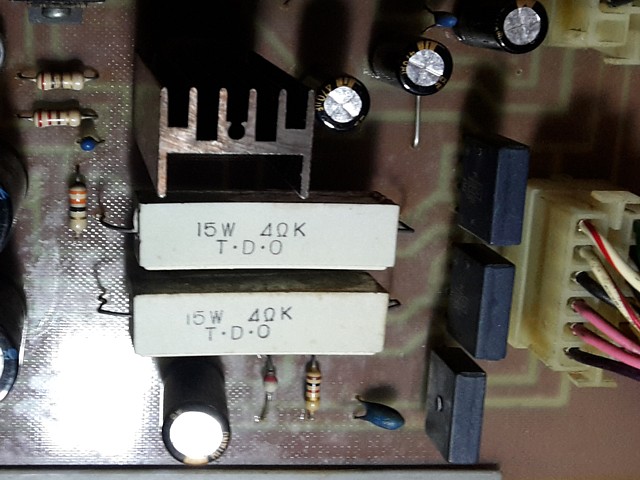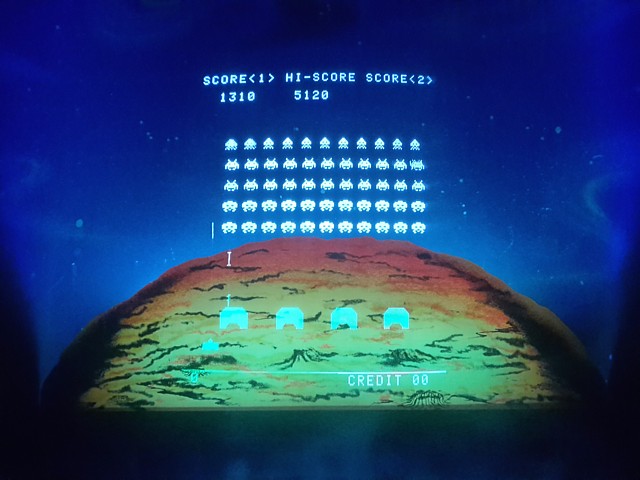
Space Invaders (B&W) upright by Taito
My space has been invaded by another machine for repair. This one is the icon, an original Taito upright machine as released in 1978.

It's had some recent repair work done elsewhere, to the original game PCB but reportedly hasn't been fully working since - initially crashing mid game and now either starting up with garbage on screen or not running at all.
The first obvious step is to check the power supply rails and initial measurements by the owner suggest there is a problem with the +12V supply but it's not conclusive whether the power supply regulator PCB is responsible or some fault in the machine wiring.
So I've agreed to take a look but asked to see the entire machine to ensure the issue can be sorted either way. Upon arrival, after close inspection of the inter board connections I powered it up and measured the DC Voltage supplies, this time the +12V was entirely absent, suggesting a fault within the regulator PCB.
The other possibility would be a short across the +12V rail on the game PCB set so to ensure there are no remaining issues there I'll check that first on the test bench. Using a test cable which I prepared earlier (for repair of a similar pcb set) and my standard arcade power supply the game starts and plays correctly, the only noticeable problem is the absence of one sound effect, the 'UFO hit' sound.

On the Taito L-shape PCB set (with SI TV ROMset installed), setting DIP switch No. 4 to ON before power up selects the inbuilt diagnostic routine which confirms the RAM memory tests OK then repeatedly plays each sound to assist with troubleshooting (missing sounds are a fairly common issue on these PCBs.)
Fortunately that turns out to be no more than a touchy volume control in this instance so cleaning the trimpot and re setting the volume for the 'UFO Hit' sound gets it working again. Each of the seven sounds heard in Space Invaders has a separate volume trimpot, visible along the 'top' edge of the I/O Sound PCB in the above photo in addition to the master volume potentiometer towards the lower left of the same PCB.
Returning the game PCB set to the machine, the next step is to remove the power supply regulator PCB and trace the path for the +12V rail with a multimeter. Following the bridge rectifier there is a 4 Ohm, 15Watt resistor which acts as a current limiting device for the +12V rail and there is a 'dry' solder joint on one of its pins which tests open circuit. This would definitely account for its intermittent operation.

There are two such resistors on the PCB, one for the +12V rail and the other for the -12V rail which is further regulated down to provide the -5V supply. They are deliberately mounted with a space between the resistor body and the PCB to prevent scorching as they run quite hot during normal operation. In the case of a current overload they are known to become extremely hot and could have weakened the solder joint as a result.
In any case, upon resoldering the joint and re-testing the supply the fault is corrected. Re-connecting the boards and readjusting the power supply Voltages at the point where they enter the game PCBs, the game is now fully working. Leaving the machine running and periodically checking its operation confirms the crashing problem is resolved.

Although they utilised microprocessor hardware which was state of the art for 1978 the original upright machines also borrowed some design aspects from earlier electro-mechanical games. These often created an image using a number of optical tricks such as mirrored, rear projection.
In the case of Space Invaders, the player views the action through a bezel which has a foreground image printed around its perimeter and doubles as the machine's illuminated marquee. The video graphics appear suspended in space thanks to a partially silvered mirror through which a backlit moonscape and wrap-around cardboard night sky backdrop can be seen.
The use of a black light tube for the backdrop intensifies the objects in the 'night sky' making them appear to glow while coloured gel strips affixed to the black and white CRT screen add colour to the laser base area and UFO path.
Although many of these machines were made, most were converted to other games or eventually scrapped, the majority which remained having since been 'upgraded' to later hardware. It's nice to see one which retains its original components and is fully working once again.
All images and text on this website are Copyright.
Contact: jbtech at telstra dot com